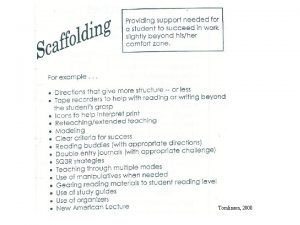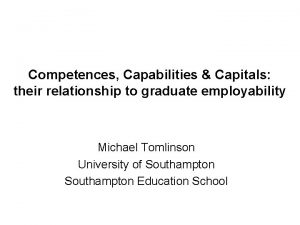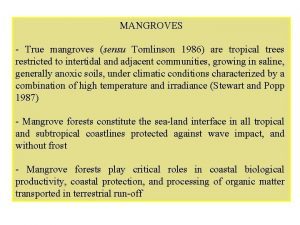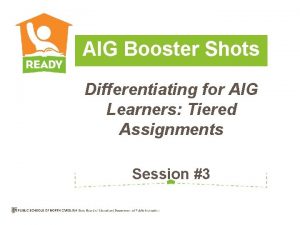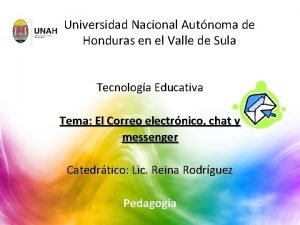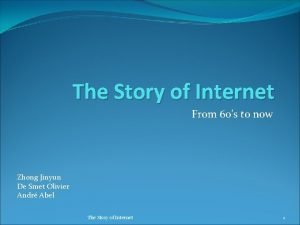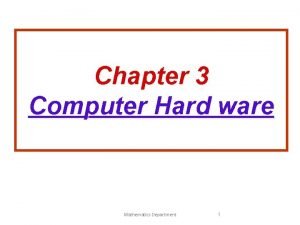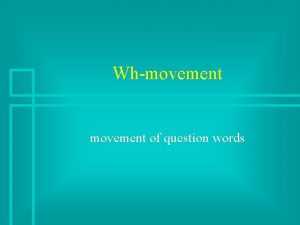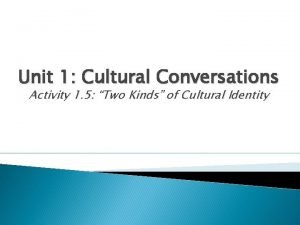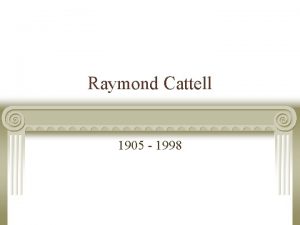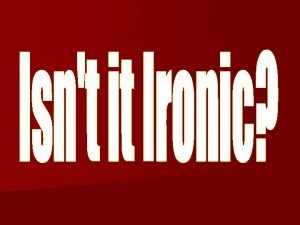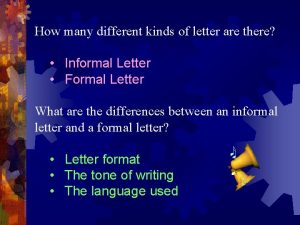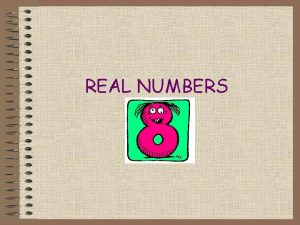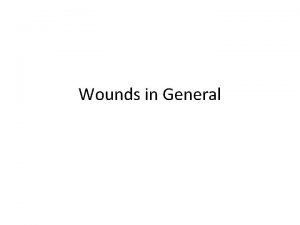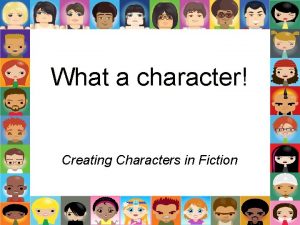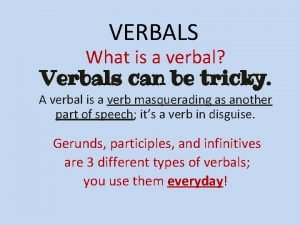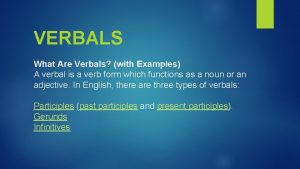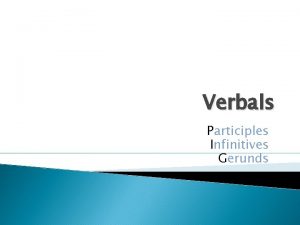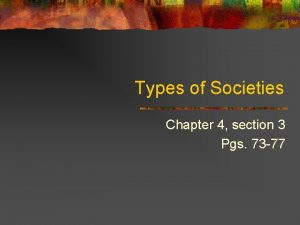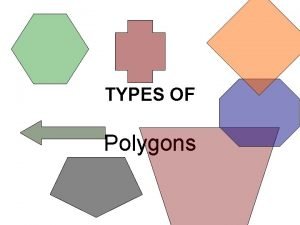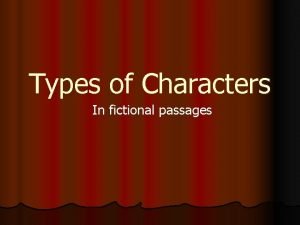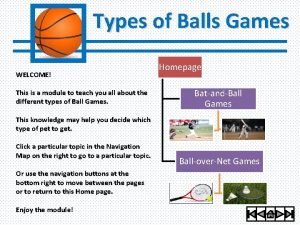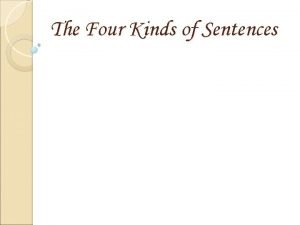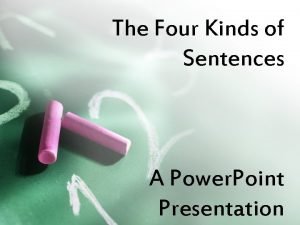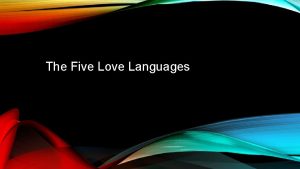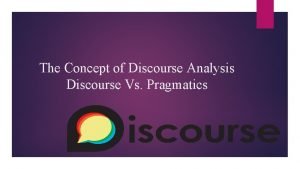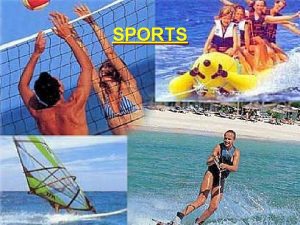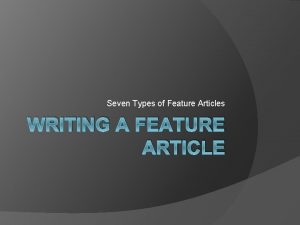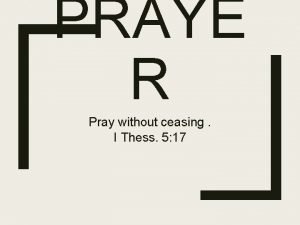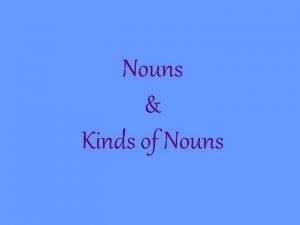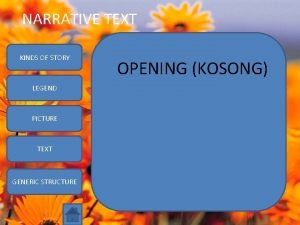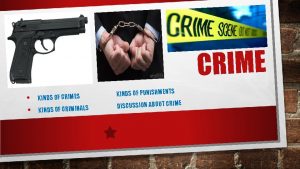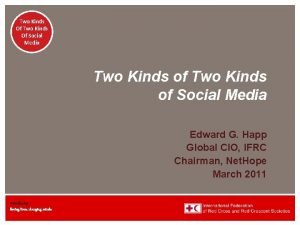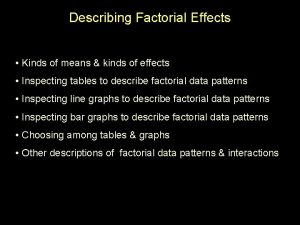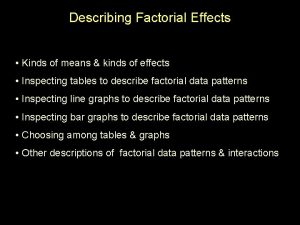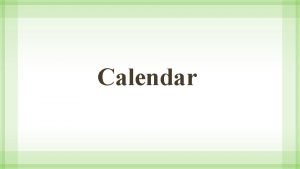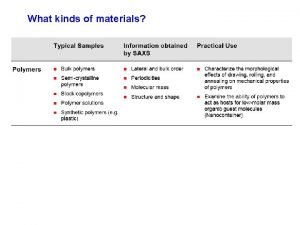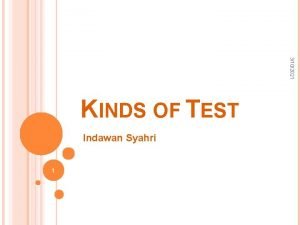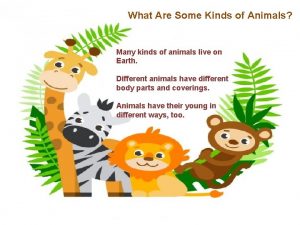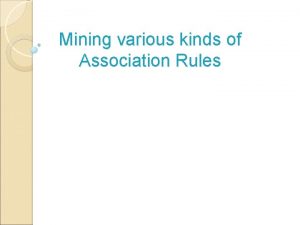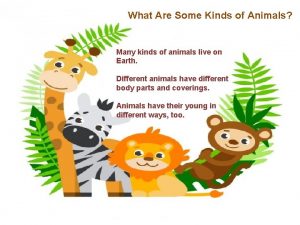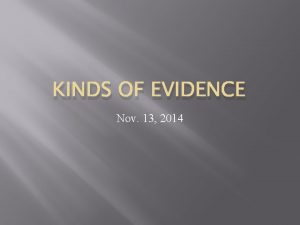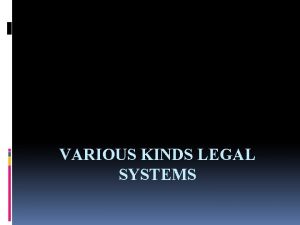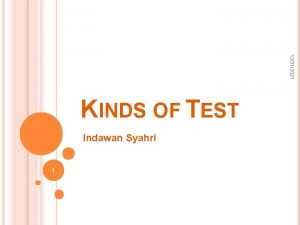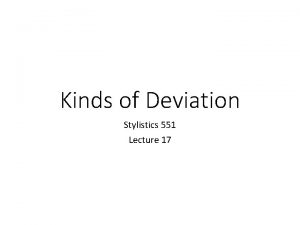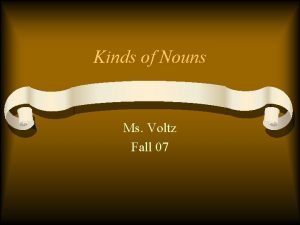Tomlinson 2000 Tomlinson 2000 Two Kinds of Curriculum



















































- Slides: 51

Tomlinson, 2000

Tomlinson, 2000

Two Kinds of Curriculum Compacting Basic Skill Compacting Content Compacting 1. 2. 3. 4. 5. Does the student already know the skills being covered in the classroom? Can proficiency be documented? Can certain skills be eliminated? Will the student be allowed (and encouraged) to master basic skill at his/her own pace? If skills can be mastered at a pace commensurate with a student’s ability, will the student be able to help determine what he/she will do in the time earned by displaying mastery? 2. 3. If the student already knows the content, will he/she have an opportunity to display competency of the subject or topic? (In English class, a teacher who has just distributed thirty copies to a sophomore class asks if anyone has already read the novel. ) If students do not already know the content but have the ability to master the material at their own pace, will they be given that opportunity? If content mastery can be demonstrated, will the student have the opportunity to select the work that will be substituted for previously mastered content?

Tomlinson, 2000

Tiered Assignments • • Rationale for Use Blends assessment and instruction Allows students to begin learning where they are Allows students to work with appropriately challenging tasks Allows for reinforcement or extension of concepts and principles based on student readiness Allows modification of working conditions based on learning style Avoids work that is anxiety-production (too hard) or boredom-producing (too easy) Promotes success and is therefore motivating

The Equalizer 1. Foundational Transformational Information, Ideas, Materials, Applications 2. Concrete Abstract Representations, Ideas, Applications, Materials 3. Simple Complex Resources, Research, Issues, Problems, Skills, Goals 4. Single Facet Multiple Facets Directions, Problems, Application, Solutions, Approaches, Disciplinary Connections 5. Small Leap Great Leap Application, Insight, Transfer 6. More Structured More Open Solutions, Decisions, Approaches 7. Less Independence Greater Independence Planning, Designing, Monitoring 8. Slow Pace of Study, Pace of Thought Quick

Kindergarten Counting Task 1: Find a way to count & show many people are in our class today. How did you get your answer? Task 2: Find a way to show many people are in our class. How many are absent today? How many are here today? How do you know? Task 3: Find a way to show many boys are in our class today. How many boys are absent today? How many girls are here today? How many girls are absent today? Prove you are right.

Adding Fractions Green Group Use Cuisinaire rods or fraction circles to model simple fraction addition problems. Begin with common denominators and work up to denominators with common factors such as 3 and 6. Explain the pitfalls and hurrahs of adding fractions by making a picture book. Red Group Use Venn diagrams to model LCMs (least common multiple). Explain how this process can be used to find common denominators. Use the method on more challenging addition problems. Write a manual on how to add fractions. It must include why a common denominator is needed, and at least three ways to find it. Blue Group Manipulatives such as Cuisinaire rods and fraction circles will be available as a resource for the group. Students use factor trees and lists of multiples to find common denominators. Using this approach, pairs and triplets of fractions are rewritten using common denominators. End by adding several different problems of increasing challenge and length. Suzie says that adding fractions is like a game: you just need to know the rules. Write game instructions explaining the rules of adding fractions.

Make Card Games!

INTEREST What does INTEREST mean? Discovering interest is important; Creating interest is even more important. Inventing Better Schools, Schlechty

BRAIN RESEARCH SHOWS THAT. . . Eric Jensen, Teaching With the Brain in Mind, 1998 Choices vs. Required content, process, product groups, resources environment Relevant no student voice restricted resources vs. Irrelevant meaningful connected to learner impersonal out of context deep understanding Engaging only to pass a test vs. emotional, energetic hands on, learner input Passive low interaction lecture seatwork EQUALS Increased intrinsic MOTIVATION Increased APATHY & RESENTMENT

-CHOICE- The Great Motivator! • Requires children to be aware of their own readiness, interests, and learning profiles. • Students have choices provided by the teacher. (YOU are still in charge of crafting challenging opportunities for all kiddos – NO taking the easy way out!) • Use choice across the curriculum: writing topics, content writing prompts, self-selected reading, contract menus, math problems, spelling words, product and assessment options, seating, group arrangement, ETC. . . • GUARANTEES BUY-IN AND ENTHUSIASM FOR LEARNING! • Research currently suggests that CHOICE should be offered 35% of the time!!

Fraction Assessment Below you will see the list of topics we covered during our unit on fractions. Choose one method from the list we brainstormed to demonstrate what you have learned during this unit of study. Remember the following criteria: • all work must be your own • you must clearly explain or show your knowledge of each concept • your work must be neat and legible, use labels when necessary Fraction Concepts/Topics: • Vocabulary: fraction, numerator, denominator, equivalent, improper fractions, mixed numbers • Fraction of a whole and a set • Examples of equivalent fractions and how they are determined • Converting improper fractions to mixed numbers and vice-versa • Common denominators • Reducing fractions to lowest possible terms • Estimation with fractions • Adding fractions with like and unlike denominators • Subtracting fractions with like and unlike denominators • Comparing fractions • Ordering fractions Choose one of the following ways to demonstrate what you learned: • Create a test and then complete it or trade with someone else that chose this task • Make a dictionary or glossary to explain fractions, include examples • Create a game that teaches all of the concepts • Write a chapter for a math book that will teach fractions • Create a story problem for each concept • Make an audio tape explaining each concept, back this us with any necessary written work • Take the chapter test, choose at least 2 problems to explain in writing or show more than one way to arrive at the solution. I have chosen the following method _______________________________ I understand the expectations and will turn in my personal best work on ________________ Student signature: _______________________________Parent signature

Assessments The assessments used in this learning profile section can be downloaded at: www. e 2 c 2. com/fileupload. asp Download either file: “Profile Assessments for Cards” “Profile Assessment WORD”

How Do You Like to Learn? 1. I study best when it is quiet. 2. I am able to ignore the noise of other people talking while I am working. 3. I like to work at a table or desk. 4. I like to work on the floor. 5. I work hard by myself. 6. I work hard for my parents or teacher. 7. I will work on an assignment until it is completed, no matter what. 8. Sometimes I get frustrated with my work and do not finish it. 9. When my teacher gives an assignment, I like to have exact steps on how to complete it. 10. When my teacher gives an assignment, I like to create my own steps on how to complete it. 11. I like to work by myself. 12. I like to work in pairs or in groups. 13. I like to have unlimited amount of time to work on an assignment. 14. I like to have a certain amount of time to work on an assignment. 15. I like to learn by moving and doing. 16. I like to learn while sitting at my desk. Yes No Yes Yes Yes No No No Yes No Yes No Yes No

My Way An expression Style Inventory K. E. Kettle J. S. Renzull, M. G. Rizza University of Connecticut Products provide students and professionals with a way to express what they have learned to an audience. This survey will help determine the kinds of products YOU are interested in creating. My Name is: __________________________ Instructions: Read each statement and circle the number that shows to what extent YOU are interested in creating that type of product. (Do not worry if you are unsure of how to make the product). Not At All Interested Of Little Interest Moderately Interested Very Interested 1. Writing Stories 1 2 3 4 5 2. Discussing what I have learned 1 2 3 4 5 3. Painting a picture 1 2 3 4 5 4. Designing a computer software project 1 2 3 4 5 5. Filming & editing a video 1 2 3 4 5 6. Creating a company 1 2 3 4 5 7. Helping in the community 1 2 3 4 5 8. Acting in a play 1 2 3 4 5

Not At All Interested Of Little Interest Moderately Interested Very Interested 9. Building an invention 1 2 3 4 5 10. Playing musical instrument 1 2 3 4 5 11. Writing for a newspaper 1 2 3 4 5 12. Discussing ideas 1 2 3 4 5 13. Drawing pictures for a book 1 2 3 4 5 14. Designing an interactive computer project 1 2 3 4 5 15. Filming & editing a television show 1 2 3 4 5 16. Operating a business 1 2 3 4 5 17. Working to help others 1 2 3 4 5 18. Acting out an event 1 2 3 4 5 19. Building a project 1 2 3 4 5 20. Playing in a band 1 2 3 4 5 21. Writing for a magazine 1 2 3 4 5 22. Talking about my project 1 2 3 4 5 23. Making a clay sculpture of a character 1 2 3 4 5

Not At All Interested Of Little Interest Moderately Interested Very Interested 24. Designing information for the computer internet 1 2 3 4 5 25. Filming & editing a movie 1 2 3 4 5 26. Marketing a product 1 2 3 4 5 27. Helping others by supporting a social cause 1 2 3 4 5 28. Acting out a story 1 2 3 4 5 29. Repairing a machine 1 2 3 4 5 30. Composing music 1 2 3 4 5 31. Writing an essay 1 2 3 4 5 32. Discussing my research 1 2 3 4 5 33. Painting a mural 1 2 3 4 5 34. Designing a computer 1 2 3 4 5 35. Recording & editing a radio show 1 2 3 4 5 36. Marketing an idea 1 2 3 4 5 37. Helping others by fundraising 1 2 3 4 5 38. Performing a skit 1 2 3 4 5

Not At All Interested Of Little Interest Moderately Interested Very Interested 39. Constructing a working model. 1 2 3 4 5 40. Performing music 1 2 3 4 5 41. Writing a report 1 2 3 4 5 42. Talking about my experiences 1 2 3 4 5 43. Making a clay sculpture of a scene 1 2 3 4 5 44. Designing a multimedia computer show 1 2 3 4 5 45. Selecting slides and music for a slide show 1 2 3 4 5 46. Managing investments 1 2 3 4 5 47. Collecting clothing or food to help others 1 2 3 4 5 48. Role-playing a character 1 2 3 4 5 49. Assembling a kit 1 2 3 4 5 50. Playing in an orchestra 1 2 3 4 5 Instructions: My Way …A Profile Write your score beside each number. Add each Row to determine your expression style profile. Products Written Oral Artistic Computer Audio/Visual Commercial Service Dramatization Manipulative Musical 1. ___ 2. ___ 3. ___ 4. ___ 5. ___ 6. ___ 7. ___ 8. ___ 9. ___ 10. ___ 11. 12. 13. 14. 15. 16. 77. 18. 19. 20. ___ ___ ___ 21. ___ 22. ___ 23. ___ 24. ___ 25. ___ 26. ___ 27. ___ 28. ___ 29. ___ 30. ___ 31. ___ 32. ___ 33. ___ 34. ___ 35. ___ 36. ___ 37. ___ 38. ___ 39. ___ 40. ___ 41. ___ 42. ___ 43. ___ 44. ___ 45. ___ 46. ___ 47. ___ 48. ___ 49. ___ 50. ___ Total _____ _____ _____

Learner Profile Card Gender Stripe Auditory, Visual, Kinesthetic Analytical, Creative, Practical Modality Sternberg Student’s Interests Multiple Intelligence Preference Gardner Array Inventory Nanci Smith, Scottsdale, AZ

Differentiation Using LEARNING PROFILE • Learning profile refers to how an individual learns best - most efficiently and effectively. • Teachers and their students may differ in learning profile preferences.

Learning Profile Factors Group Orientation independent/self orientation group/peer orientation adult orientation combination Gender & Culture Cognitive Style Creative/conforming Essence/facts Expressive/controlled Nonlinear/linear Inductive/deductive People-oriented/task or Object oriented Concrete/abstract Collaboration/competition Interpersonal/introspective Easily distracted/long Attention span Group achievement/personal achievement Oral/visual/kinesthetic Reflective/action-oriented Learning Environment quiet/noise warm/cool still/mobile flexible/fixed “busy”/”spare” Intelligence Preference analytic practical creative verbal/linguistic logical/mathematical spatial/visual bodily/kinesthetic musical/rhythmic interpersonal intrapersonal naturalist existential

Activity 2. 5 – The Modality Preferences Instrument (HBL, p. 23) Follow the directions below to get a score that will indicate your own modality (sense) preference(s). This instrument, keep in mind that sensory preferences are usually evident only during prolonged and complex learning tasks. Identifying Sensory Preferences Directions: For each item, circle “A” if you agree that the statement describes you most of the time. Circle “D” if you disagree that the statement describes you most of the time. 1. I Prefer reading a story rather than listening to someone tell it. A D 2. I would rather watch television than listen to the radio. A D 3. I remember faces better than names. A D 4. I like classrooms with lots of posters and pictures around the room. A D 5. The appearance of my handwriting is important to me. A D 6. I think more often in pictures. A D 7. I am distracted by visual disorder or movement. A D 8. I have difficulty remembering directions that were told to me. A D 9. I would rather watch athletic events than participate in them. A D 10. I tend to organize my thoughts by writing them down. A D 11. My facial expression is a good indicator of my emotions. A D 12. I tend to remember names better than faces. A D 13. I would enjoy taking part in dramatic events like plays. A D 14. I tend to sub vocalize and think in sounds. A D 15. I am easily distracted by sounds. A D 16. I easily forget what I read unless I talk about it. A D 17. I would rather listen to the radio than watch TV A D 18. My handwriting is not very good. A D 19. When faced with a problem , I tend to talk it through. A D 20. I express my emotions verbally. A D 21. I would rather be in a group discussion then read about a topic. A D

22. I prefer talking on the phone rather than writing a letter to someone. A D 23. I would rather participate in athletic events than watch them. A D 24. I prefer going to museums where I can touch the exhibits. A D 25. My handwriting deteriorates when the space becomes smaller. A D 26. My mental pictures are usually accompanied by movement. A D 27. I like being outdoors and doing things like biking, camping, swimming, hiking etc. A D 28. I remember best what was done rather then what was seen or talked about. A D 29. When faced with a problem, I often select the solution involving the greatest activity. A D 30. I like to make models or other hand crafted items. A D 31. I would rather do experiments rather then read about them. A D 32. My body language is a good indicator of my emotions. A D 33. I have difficulty remembering verbal directions if I have not done the activity before. A D Interpreting the Instrument’s Score Total the number of “A” responses in items 1 -11 _____ This is your visual score Total the number of “A” responses in items 12 -22 _____ This is your auditory score Total the number of “A” responses in items 23 -33 _____ This is you tactile/kinesthetic score If you scored a lot higher in any one area: This indicates that this modality is very probably your preference during a protracted and complex learning situation. If you scored a lot lower in any one area: This indicates that this modality is not likely to be your preference(s) in a learning situation. If you got similar scores in all three areas: This indicates that you can learn things in almost any way they are presented.

Visual Take numerous detailed notes • Tend to sit in the front • Are usually neat and clean • Often close their eyes to visualize or remember something • Find something to watch if they are bored • Like to see what they are learning • Benefit from illustrations and presentations that use color • Are attracted to written or spoken language rich in imagery • Prefer stimuli to be isolated from auditory and kinesthetic distraction • http: //www. usd. edu/trio/tut/ts/styleres. html

Auditory • Sit where they can hear but needn't pay attention to what is happening in front • May not coordinate colors or clothes, but can explain why they are wearing what they are wearing • Hum or talk to themselves or others when bored • Acquire knowledge by reading aloud • Remember by verbalizing lessons to themselves (if they don't they have difficulty reading maps or diagrams or handling conceptual assignments like mathematics). http: //www. usd. edu/trio/tut/ts/styleres. html

Kinesthetic • Need to be active and take frequent breaks • Speak with their hands and with gestures • Remember what was done, but have difficulty recalling what was said or seen • Find reasons to tinker or move when bored • Rely on what they can directly experience or perform • Activities such as cooking, construction, engineering and art help them perceive and learn • Enjoy field trips and tasks that involve manipulating materials • Sit near the door or someplace else where they can easily get up and move around • Are uncomfortable in classrooms where they lack opportunities for hands-on experience • Communicate by touching and appreciate physically expressed encouragement, such as a pat on the back http: //www. usd. edu/trio/tut/ts/styleres. html

Modality Task Prompts Visual Auditory Kinesthetic Pictures Speeches Matching games Graphic Organizers Discussions Modeling Color coding Infomercials or PSAs “Becoming” the task Posters Creating Question Lists Hands-on tasks / touching Charts / Graphs Read Alouds “Peg Board” yarn game Videos Books / Instructions on tape Gestures and Motions Detailed Notes Self Talk (Whispies) Motion Visualizing Tape Recording Answers Drama / Skits Making Books Interviews Charades To Do Lists Lectures / Tone & Inflection Manipulatives Written Directions Spoken Directions Modeled Directions

Multiplication Facts: 4’s and 8’s • Visual: – • Auditory: – • Make two posters - one will diagram all of the 4 multiplication facts and the other diagrams the 8 multiplication facts. Put together a skit or newscast about multiplying by 4 and 8. Have lots of examples! Kinesthetic: – – Play multiplication rummy or memory Use counters to model the 4 and 8 multiplication facts. List all of the resulting equations and answers.

Parallel Lines Cut by a Transversal • Visual: Make posters showing all the angle relations formed by a pair of parallel lines cut by a transversal. Be sure to color code definitions and angles, and state the relationships between all possible angles. 2 1 4 3 5 6 8 7 Smith & Smarr, 2005

Parallel Lines Cut by a Transversal • Auditory: Play “Shout Out!!” Given the diagram below and commands on strips of paper (with correct answers provided), players take turns being the leader to read a command. The first player to shout a correct answer to the command, receives a point. The next player becomes the next leader. Possible commands: – Name an angle supplementary to angle 1. – Name an angle congruent to angle 2. 2 6 5 7 8 1 4 3 Smith & Smarr, 2005

Parallel Lines Cut by a Transversal • Kinesthetic: Walk It Tape the diagram below on the floor with masking tape. Two players stand in assigned angles. As a team, they have to tell what they are called (ie: vertical angles) and their relationships (ie: congruent). Use all angle combinations, even if there is not a name or relationship. (ie: 2 and 7) 2 5 1 4 3 8 6 7 Smith & Smarr, 2005

Self Assessment: Theory of Multiple Intelligences Where does your true intelligence (processing ability) lie? This quiz can help you determine where you stand. Read each statement. If it expresses some characteristic of yours and sounds true for the most part jot down a “T”. If it doesn’t mark and “F”. If the statement is sometimes true, sometimes false, leave it blank. 1. _____ I’d rather draw a map than give someone verbal directions. 2. _____ I can play (or used to play) a musical instrument. 3. _____ I can associate music with my moods. 4. _____ I can add or multiply quickly in my head. 5. _____ I like to work with calculators and computers. 6. _____ I pick up new dance steps quickly. 7. _____ It’s easy for me to say what I think in an argument or debate. 8. _____ I enjoy a good lecture, speech, or sermon. 9. _____ I always know north from south no matter where I am. 10. _____ Life seems empty without music. 11. _____ I always understand the directions that comes with new gadgets or appliances. 12. _____ I like to work puzzles and play games. 13. _____ Learning to ride a bike (or skate) was easy. 14. _____ I am irritated when I hear an argument or statement that sounds illogical. 15. _____ My sense of balance and coordination is good. 16. _____ I often see patterns and relationships between numbers faster and easier than others. 17. _____ I enjoy building models (or sculpting). 18. _____ I am good at finding the fine points of word meanings. 19. _____ I can look at an object one way and see it turned sideways or backwards just as easily. 20. _____ I often connect a piece of music with some event in my life. 21. _____ I like to work with numbers and figures. 22. _____ Just looking at shapes of buildings and structures is pleasurable to me. 23. _____ I like to hum, whistle, and sing in the shower or when I am alone. 24. _____ I’m good at athletics. 25. _____ I’d like to study the structure and logic or languages. 26. _____ I’m usually aware of the expressions on my face. 27. _____ I’m sensitive to the expressions on other people’s faces. 28. _____ I stay in touch with my moods. I have no trouble identifying them. 29. _____I am sensitive to the moods of others. 30. _____ I have a good sense of what others think of me.

Scoring Sheet Place a checkmark by each item, which you marked as "True. " Add your totals. A total of (four in any of the categories A through E indicates strong ability. In categories F through G a Score of one or more means you have abilities in these areas as well. A Linguistic 7 ___ 8 ___ 14 ___ 18 ___ 25 ___ E Body-kinesthetic 6 ___ 13 ___ 15 ___ 17 ___ 24 ___ B Logical / Mathematical 4 ___ 5 ___ 12 ___ 16 ___ 21 ___ C Musical 2 ___ 3 ___ 10 ___ 23 ___ F Intrapersonal 26 ___ 28 ___ D Spatial 1 ___ 9 ___ 11 ___ 19 ___ 22 ___ G Interpersonal 27 ___ 29 ___ 30 ___

EIGHT STYLES OF LEARNING TYPE CHARACTERISTICS LIKES TO IS GOOD AT LEARNS BEST BY LINGUISTIC LEARNER Learns through the manipulation of words. Loves to read and write in order to explain themselves. They also tend to enjoy talking Read Write Tell stories Memorizing names, places, dates and trivia Saying, hearing and seeing words “The Questioner” Looks for patterns when solving problems. Creates a set of standards and follows them when researching in a sequential manner. Do experiments Figure things out Work with numbers Ask questions Explore patterns and relationships Math Reasoning Logic Problem solving Categorizing Classifying Working with abstract patterns/relationships SPATIAL LEARNER Learns through pictures, charts, graphs, diagrams, and art. Draw, build, design and create things Daydream Look at pictures/slides Watch movies Play with machines Imagining things Sensing changes Mazes/puzzles Reading maps, charts Visualizing Dreaming Using the mind’s eye Working with colors/pictures Learning is often easier for these students when set to music or rhythm Sing, hum tunes Listen to music Play an instrument Respond to music Picking up sounds Remembering melodies Noticing pitches/ rhythms Keeping time Rhythm Melody Music “The Word Player” LOGICAL/ Mathematical Learner “The Visualizer” MUSICAL LEARNER “The Music Lover”

EIGHT STYLES OF LEARNING, Cont’d TYPE CHARACTERISTICS LIKES TO IS GOOD AT LEARNS BEST BY BODILY/ Kinesthetic Learner Eager to solve problems physically. Often doesn’t read directions but just starts on a project Move around Touch and talk Use body language Physical activities (Sports/dance/ acting) crafts Touching Moving Interacting with space Processing knowledge through bodily sensations Likes group work and working cooperatively to solve problems. Has an interest in their community. Have lots of friends Talk to people Join groups Understanding people Leading others Organizing Communicating Manipulating Mediating conflicts Sharing Comparing Relating Cooperating interviewing Enjoys the opportunity to reflect and work independently. Often quiet and would rather work on his/her own than in a group. Work alone Pursue own interests Understanding self Focusing inward on feelings/dreams Pursuing interests/ goals Being original Working along Individualized projects Self-paced instruction Having own space Enjoys relating things to their environment. Have a strong connection to nature. Physically experience nature Do observations Responds to patterning nature Exploring natural phenomenon Seeing connections Seeing patterns Reflective Thinking Doing observations Recording events in Nature Working in pairs Doing long term projects “The Mover” INTERpersonal Learner “The Socializer” INTRApersonal Learner “The Individual” NATURALIST “The Nature Lover”

Multiplying by 3 and 6! • • • Play Multiplication Memory card game (Kinesthetic, interpersonal). Make a picture book of multiplication facts for 3 and/or 6 (visual/spatial). Make up a song about (or of) the multiplication facts for 3 and/or 6 (musical). Write a diary entry about the 3 and 6 multiplication facts. What are they? How can you remember them? If you forget one, how could you figure it out? (Intrapersonal / verbal linguistic) Write a story that involves multiplication by 3 and 6 (verbal linguistic). Show as many different models of multiplication by 3 and 6 of which you can think. How is multiplying by 6 related to multiplying by 3? (Logical / Mathematical)

Thinking About the Sternberg Intelligences ANALYTICAL Linear – Schoolhouse Smart - Sequential Show the parts of _____ and how they work. Explain why _______ works the way it does. Diagram how _____ affects _________. Identify the key parts of ___________. Present a step-by-step approach to _________. PRACTICAL Streetsmart – Contextual – Focus on Use Demonstrate how someone uses ____ in their life or work. Show we could apply _____ to solve this real life problem ____. Based on your own experience, explain how _____ can be used. Here’s a problem at school, ____. Using your knowledge of _______, develop a plan to address the problem. CREATIVE Innovator – Outside the Box – What If - Improver Find a new way to show _______. Use unusual materials to explain ________. Use humor to show __________. Explain (show) a new and better way to ______. Make connections between _____ and _____ to help us understand ______. Become a ____ and use your “new” perspectives to help us think about ______.

Triarchic Theory of Intelligences Robert Sternberg Mark each sentence T if you like to do the activity and F if you do not like to do the activity. 1. 2. 3. 4. 5. 6. 7. 8. 9. 10. 11. 12. 13. 14. 15. Analyzing characters when I’m reading or listening to a story Designing new things Taking things apart and fixing them Comparing and contrasting points of view Coming up with ideas Learning through hands-on activities Criticizing my own and other kids’ work Using my imagination Putting into practice things I learned Thinking clearly and analytically Thinking of alternative solutions Working with people in teams or groups Solving logical problems Noticing things others often ignore Resolving conflicts ___ ___ ___ ___

Triarchic Theory of Intelligences Robert Sternberg Mark each sentence T if you like to do the activity and F if you do not like to do the activity. 16. 17. 18. 19. 20. 21. 22. 23. 24. 25. 26. 27. 28. 29. 30. Evaluating my own and other’s points of view Thinking in pictures and images Advising friends on their problems Explaining difficult ideas or problems to others Supposing things were different Convincing someone to do something Making inferences and deriving conclusions Drawing Learning by interacting with others Sorting and classifying Inventing new words, games, approaches Applying my knowledge Using graphic organizers or images to organize your thoughts Composing Adapting to new situations ___ ___ ___ ___

Triarchic Theory of Intelligences – Key Transfer your answers from the. Robert survey to. Sternberg the key. The column with the most True responses is your dominant intelligence. Analytical 1. ___ 4. ___ 7. ___ 10. ___ 13. ___ 16. ___ 19. ___ 22. ___ 25. ___ 28. ___ Creative 2. ___ 5. ___ 8. ___ 11. ___ 14. ___ 17. ___ 20. ___ 23. ___ 26. ___ 29. ___ Practical 3. ___ 6. ___ 9. ___ 12. ___ 15. ___ 18. ___ 21. ___ 24. ___ 27. ___ 30. ___ Total Number of True: Analytical ____ Creative _____ Practical _____

Analytical • • • Bullets Lists Steps Worksheets Tables Venn Diagrams Timelines Sequential Items Flow Charts Compare and Contrast Find the error Evaluating Sorting and Classifying Appealing to logic Critique and Criticize Explaining Difficult Problems to others • Making Inferences and Deriving Conclusions • Puns and Subtleties • • •

Practical • Working your way out of a problem • Notes to Self (what questions to ask myself, how to make sense of for myself) • Here is a problem, explain what happened • Analogies • Draw real world examples • Advising and convincing others (Advice columns) • Hands-on Activities • Taking things apart and fixing them • Understanding and Respecting others / Friendships / Resolving Conflicts • Putting things into Practice • Adapting to New Situations

Creative Figure out a way to explain Idiot’s Guide To… (Book for Dummies) How to represent Make your own interpretation Pictures or news bulletins to describe Designing new things Alternative solutions and methods Thinking in pictures and images Noticing things other people tend to ignore Suppose something was changed… What would happen if? • Acting and Role playing • Inventing • • •

• Analytical – Draw arrays for multiplying by 3 and 6, and list the facts next to each array. Next, make a list of as many patterns as you can find from the multiplication facts. Make a poster to help the class remember the 3 and 6 multiplication facts. • Practical – You and 5 of your friends go to the zoo. You all pay the admission of $3. 00 each. You each buy a box lunch and each lunch costs $5. 00. Three of your friends decide to buy a stuffed animal at the gift shop. The stuffed animals each cost $7. 00. – How much money was spent on admission in total? – How much money was spent on lunch in total? – How much money was spent on stuffed animals in total? – How much money was spent in total? – Show you know each of your answers is correct by explaining or drawing how you found each answer.

• Creative – Complete the following RAFT ROLE AUDIENCE FORMAT TOPIC Multiplication by 3 Multiplication by 2 Friendly letter If someone knows you, they can find me. Multiplication by 3 Multiplication by 6 Friendly letter If someone knows you, they can find me. OR: – Think of a way to remember the 3 and/or 6 multiplication facts. Make a poster, explain, sing or draw how to remember them.

Understanding Order of Operations Analytic Task Make a chart that shows all ways you can think of to use order of operations to equal 18. Practical Task A friend is convinced that order of operations do not matter in math. Think of as many ways to convince your friend that without using them, you won’t necessarily get the correct answers! Give lots of examples. Creative Task Write a book of riddles that involve order of operations. Show the solution and pictures on the page that follows each riddle.

Triarchic Theory Distance = rate x time 1. Solve for d = r t (Analytical) 2. Design your own formula for d = r t (Creative) 3. Estimate the time it takes to fly from Maui, Hawaii to Singapore (Practical) Adapted from Yale Summer Psychology Program

Circle Vocabulary All Students: Students find definitions for a list of vocabulary (center, radius, chord, secant, diameter, tangent point of tangency, congruent circles, concentric circles, inscribed and circumscribed circles). They can use textbooks, internet, dictionaries or any other source to find their definitions.

Circle Vocabulary Analytical Students make a poster to explain the definitions in their own words. Posters should include diagrams, and be easily understood by a student in the fifth grade. Practical Students find examples of each definition in the room, looking out the window, or thinking about where in the world you would see each term. They can make a mural, picture book, travel brochure, or any other idea to show where in the world these terms can be seen.

Circle Vocabulary Creative Find a way to help us remember all this vocabulary! You can create a skit by becoming each term, and talking about who you are and how you relate to each other, draw pictures, make a collage, or any other way of which you can think. OR Role Audience Format Topic Diameter Radius email Twice as nice Circle Tangent poem You touch me! Secant Chord voicemail I extend you.
 Tomlinson 2000
Tomlinson 2000 Tomlinson's graduate capital model
Tomlinson's graduate capital model True mangroves
True mangroves Tomlinson v congleton
Tomlinson v congleton Tomlinson's equalizer
Tomlinson's equalizer Ray tomlinson
Ray tomlinson Tracy tomlinson
Tracy tomlinson First email ray tomlinson
First email ray tomlinson Ray tomlinson wikipedia
Ray tomlinson wikipedia The two kinds of quantitative research are
The two kinds of quantitative research are Two kinds of main memory are
Two kinds of main memory are Market forms of fish and shellfish
Market forms of fish and shellfish Two kinds of questions
Two kinds of questions Two kinds of cultural identity activity 1.5 answer key
Two kinds of cultural identity activity 1.5 answer key Two important kinds of metaergs are
Two important kinds of metaergs are What is a verbal irony
What is a verbal irony Different kinds of letter
Different kinds of letter Two kinds of real numbers
Two kinds of real numbers Susan wolf moral saints
Susan wolf moral saints Definition of curriculum according to mudaliar commission
Definition of curriculum according to mudaliar commission Kinds of wounds with pictures
Kinds of wounds with pictures Altruistic love is
Altruistic love is What types of engineers are there
What types of engineers are there Slidetodoc.com
Slidetodoc.com Fictional character
Fictional character Welding symbols meaning
Welding symbols meaning Participle mean
Participle mean Examples of verbals
Examples of verbals What are verbals what are the kinds of verbals
What are verbals what are the kinds of verbals Simple horticultural societies
Simple horticultural societies Types of polygon
Types of polygon Flush line headline
Flush line headline Claim ofpolicy
Claim ofpolicy 5 types of characters
5 types of characters Kinds of balls
Kinds of balls Mood in story
Mood in story Exclamatory sentence
Exclamatory sentence Kinds of sentences
Kinds of sentences Kinds of love language
Kinds of love language Defense of poesy summary
Defense of poesy summary Discourse analysis vs pragmatics
Discourse analysis vs pragmatics Types of colonies
Types of colonies There are many kinds of sports
There are many kinds of sports Existential universal statement examples
Existential universal statement examples Kinds of soil
Kinds of soil Paid up capital
Paid up capital Types of features writing
Types of features writing Types of praying
Types of praying 4 parenting styles
4 parenting styles Kinds of nouns
Kinds of nouns What is a noun
What is a noun Definition of legend narrative text
Definition of legend narrative text
